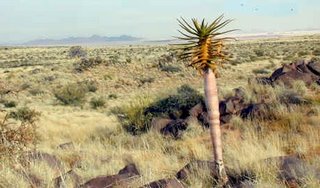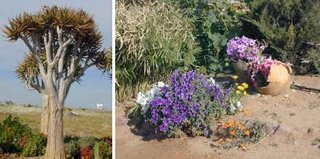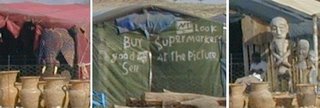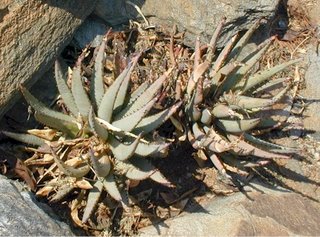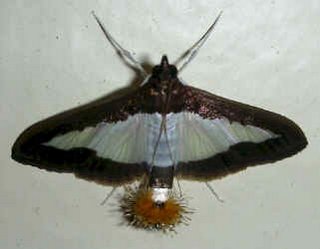Tree aloes
Few gardens have the space or very strict conditions to grow these extraordinary "tree aloes", but it is worth the space and trouble. These plants never fail to attract attention to a garden. The tree aloes are under discussion and it seems that a change of classification might be done in the near future. It should be available on the www .Aloe pilansii the top of the range of "must have" for the serious and experienced aloe gardeners. It is also the most difficult of the tree aloes to grow - if you are able to get one!
That is me very honoured to stand next to this tree aloe in habitat. Take a look at that habitat. Near to impossible to create and even if you live in semi-desert the chemical make-up of the soil plays a role too.
below:- Aloes of this group known as tree aloes growing in the Vanrhynsdorp nursery. The nursery is situated in habitat of these aloes which makes it much easier to cultivate them. Tree aloes from this Vanrhynsdorp nursery has been transported by air at great cost to quite a few gardens public and private world wide.
This photo was taken inside the nursery near the office. In the centre of this aloe group is a very well grown Aloe ramosissima - it seldom reaches that hight. It is the smallest of this tree aloe group forming a bush growth not single stem tree growth. It is more difficult than Aloe dichotoma when grown out of habitat.On the photo above; Aloe dichotoma, is on the left. Aloe dichotoma x Aloe ramosissima hybrid growing to the right is easier to cultivate and grows faster than either one of the two species.
above: Aloe dichotoma in habitat. Richtersveld RSA. That is a natural group of trees. Trees can be seen on the hill in the background. The trees grow in rocky areas where the seeds are blown under the rocks and the seedlings are protected against the harsh sun.
Lovely photo taken in the southern part of Namibia after a good rain season. The Aloe dichotoma servived the difficult first stage and may have enough strength to become a tree with branches.
Aloe dichotoma has no problem to grow in a public garden in Windhoek. The green grass grows in the top soil layer which is watered. A few centimetres down the ground is dry.





